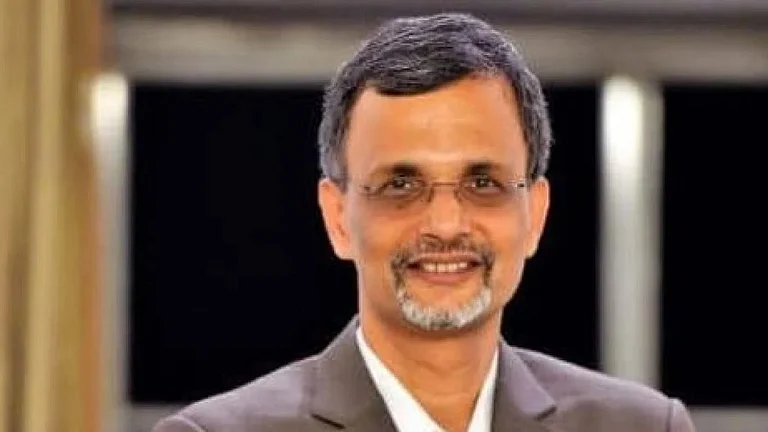
New Education Policy 2020 aimed to globalise Indian higher education, welcoming foreign universities and promoting campuses abroad.
Today, about 4 lakh Indians study overseas, but India hosts only just about 40,000 foreign students.
Regardless of the idealistic framework, the trajectory of internationalisation in Indian management institutions is sluggish.
The New Education Policy (NEP) 2020 marked a pivotal shift in India’s pursuit of globalising its higher education landscape. It seeks to establish India as a global academic powerhouse via the entry of foreign universities, encouraging Indian schools to branch out abroad and, boosting international research collaborations and student mobility.
The policy emphasises initiatives such as transdisciplinary education, course flexibility, and priority on research and innovation—all of which are essential components of global academic competitiveness. Regardless of the NEP's idealistic framework, the trajectory of internationalisation in Indian business and management institutions is sluggish.
Currently, while over 0.4 million Indian students study abroad, India accommodates only approximately 40,000 international students, revealing an alarming disparity in student mobility. The ambitious target of hosting 200,000 foreign students under initiatives such as ‘Study in India’ seems far from achievable at the current rate.
On the surface, there are three broad dimensions under the internationalisation umbrella: structural, policy, and strategic. First, critical attention is needed in the structural orientation of Indian institutions. Most business schools and management institutes are not truly designed for internationalisation.
With a few exceptions, which include IIMs and select private institutions, Indian management schools lack autonomy, global faculty exposure, lack of summer schools, joint research programs, campuses abroad, language barriers, gender diversity and underdeveloped research ecosystems crucial to lure international students and foster essential academic collaborations.
Another crucial dimension relates to policy orientation, wherein the emphasis remains mostly local, driven by rankings such as the National Institutional Ranking Framework (NIRF), which typically prioritise quantitative indicators such as the number of PhD holders above international exposure, student diversity, brand development, global citizenship, research partnerships and grants.
Consequently, institutions are driven to pursue performance metrics that may not be consistent with international norms. Failure to implement erodes the impact of internationalisation initiatives. While the NEP has outlined an ambitious goal, institutional implementation is impeded by bureaucratic roadblocks under the strategic dimension, such as a lack of clear vision, mission, goals, and inadequate supply of finance. Shocking it is to quote that, many institutions are either ambiguous or have no distinct committee or division solely focused on internationalisation.
There is no shortage of challenges faced by the Indian institutions. State universities and many private schools confront infrastructure and technological challenges that impede their capacity to provide internationally competitive education. Despite NEP's emphasis on digital learning and international collaboration, the digital divide, particularly between urban and rural institutions, ensures unequal access to global platforms. Faculty development has remained a neglected theme.
Many instructors have limited exposure to foreign instructional methods, which renders it challenging to establish compelling and internationally relevant learning settings. Moreover, cultural inertia and risk aversion among academic leaders often limit efforts to pursue international accreditation, global curriculum co-development, or international faculty/student exchange programs.
Another noteworthy impediment is a lack of internationally relevant research. High-impact international collaborations are rare outside elite institutions, such as IIM Ahmedabad, IIM Bangalore, or IITs.
For instance, in the 2024 NIRF rankings, IIM Udaipur dropped from rank 16 to 22; could this be due to research output and peer perception? —factors critical to global standing. Similarly, IMI Kolkata, despite its partnerships with reputed international bodies such as Oxford’s Institute of Retail Management, ranked only 56 in the NIRF 2024 rankings, showing that partnerships alone cannot drive internationalisation without internal academic reforms.
Even high-profile private institutions such as FORE School of Management and Birla Institute of Management Technology continue to struggle with global credibility due to inconsistent research quality, limited international faculty, and low foreign student enrolment.
The anticipated opening of international branch campuses in India is among the features of the NEP’s breakout. Unfortunately, there has not been much progress in either area.
Leading international institutions have refrained from opening operations in India because of regulatory uncertainties, reservations about autonomy, revenue-sharing schemes, uncertainty regarding dual degrees and joint certifications, tax incentives, accreditation processes, lack of comprehensive orientation programs, dearth of scholarships, housing, career services tailored to international learners, and infrastructure capability.
Issues such as stringent visa requirements, dearth of student support services, and safety concerns further hinder the movement of inbound international students.
The lack of cultural orientation programs, limited availability of English-language programs, and language hurdles all make India an unsettling study abroad option.Somewhere the answer lies in simply addressing these challenges, for instance, clear regulatory guidelines regarding collaborative degrees, cultural orientation, scholarships, robust infrastructure, marketing efforts such as a revamped “Study in India” campaign targeting specific regions—Africa, ASEAN, Central Asia—where India holds strategic interest, among other propositions.
National rankings and accreditation systems, such as the NIRF, must evolve to include globalisation-focused metrics. These should assess student diversity, foreign faculty ratio, the number of active international MoUs, and global employability outcomes. Only when the performance assessment system values internationalisation will institutions shift their priorities meaningfully.
In a nutshell even if the NEP 2020 has laid down a policy environment that is conducive to internationalization, Indian management and corporate organizations nonetheless remain far from being competent to comprehensively embrace it. India's ambitions of growing into the premier destination for education globally would remain primarily aspirational in the absence of structural, policy and strategic changes.
India must transition from its myopic vision to strategic action, based on quality, transparency, and international engagement, should India sincerely become a knowledge leader, which India long hopes to become!






























